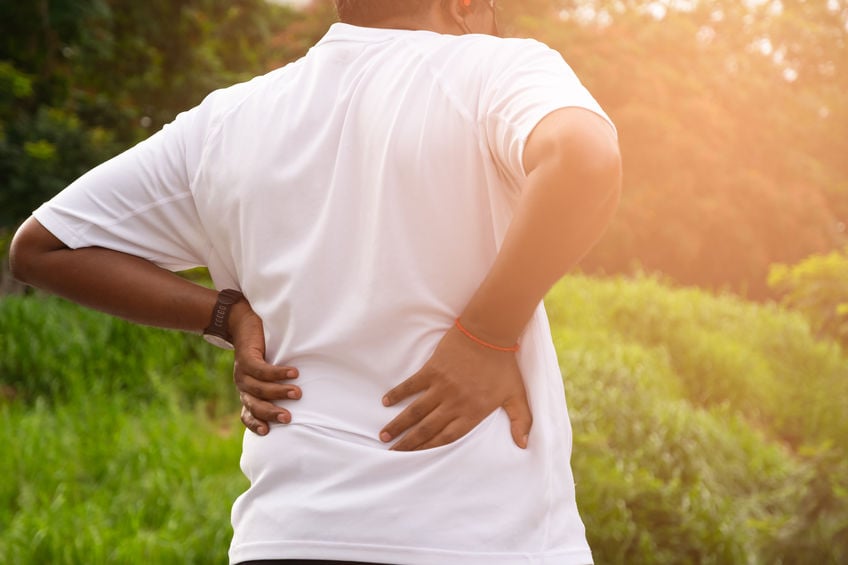Is Your Rotator Cuff Torn?
Rotator cuffs are an essential part of the shoulder. Without this crucial joint, lifting, stretching, and twisting the shoulder and arm is near impossible. A rotator cuff is a group of muscles, ligaments, and tendons covering the shoulder’s ball and socket joint. The rotator cuff also stabilizes the shoulder. For some, the rotator cuff is susceptible to partial or full tears of one or more ligaments.

Signs and symptoms
Someone with a rotator cuff tear knows almost immediately. The first sign is intense pain when stretching or raising the arm or pain while resting, especially at night. People often feel a clicking or popping sensation when rotating the affected arm. Persons with any signs of prolonged pain or weakness should see a doctor immediately. While everyone is not susceptible to rotator cuff tears, these are 4 risk factors to consider.
1. Cuffs worsen with age
Degeneration due to age is one of the most significant risk factors for rotator cuff injuries. Joints, ligaments, and tendons lose strength and flexibility with age. Muscles also become weaker. As a result, simple actions as a youth can cause rotator cuff damage in those twilight years. Persons over 60 are more likely to get rotator cuff injuries.
2. Some sports create tears
Some athletes at the peak of performance can come right back down to earth due to injury. Rotator cuff tears are one such injury. Athletes who repetitively use the arm like basketballers, golfers, and pitchers are at risk. That does not rule out other sports as persons can get injured in freak accidents.
3. Check your family history
While scientists are unable to say why research shows that rotator cuff tears may be hereditary. Some families are more susceptible to injury or rotator cuff disease. The issue could also be connected to arthritis. If arthritis runs in the family, rotator cuff tears are more likely to occur.
4. Beware occupational hazards
Some jobs require repetitive use of the arms and shoulders. Over time, these tasks can create micro-tears on the ligaments protecting the rotator cuff. That opens up the possibility of a partial or full tear in the future. The jobs that pose a high risk include construction, loggers, carpenters, and painters
The right habits keep you injury-free
There are some simple but effective steps to reduce the chances of injury. For starters, make sure to take adequate rest, especially if the shoulder is in high use. Avoid constant overhead positions that cause repetitive strain on the shoulder. Strengthening the shoulder through exercise and physical therapy prevents injury over time. Lastly, adopt a healthy lifestyle through diet and supplements while avoiding smoking.
Beware the risks and take action
Regardless of the type of injury, rotator cuff tears can be painful. These tears limit the use of the shoulder and arm. Beware the risk factors, especially the situations that can cause injury. With proper rest and exercise, rotator cuff tears can be prevented. For any signs of injury, seek medical help immediately.
Can Lower Back Pain Return After Spinal Surgery? 3 Lifestyle Changes To Get The Most Out Of Fusion
Minnesota Valley Valley Center2024-04-02T14:49:38-05:00April 15th, 2024|
Spinal surgery is an excellent solution for lower back pain, but symptoms can return. With lifestyle changes, patients can get the most out of fusion.
A New Lease On Life: Exploring How Robotic Total Joint Replacement Can Get You Active Again
Minnesota Valley Valley Center2024-03-24T17:38:47-05:00March 29th, 2024|
Robotic total joint replacement uses a robotic arm to replace the joint. This innovative approach allows a quick return to activities.
Restoring Dexterity: How Outpatient Carpal Tunnel Surgery Can Change Your Life
Minnesota Valley Valley Center2024-03-24T17:38:37-05:00March 15th, 2024|
After months of wrist and hand pain, carpal tunnel surgery may be needed. With outpatient options, restored dexterity with less pain and discomfort is possible.
More Articles from MVSC
April 15, 2024
Spinal surgery is an excellent solution for lower back pain, but symptoms can return. With lifestyle changes, patients can get the most out of fusion.
February 29, 2024
Rotator cuff tears can severely limit shoulder mobility. Surgery can relieve pain and improve mobility, allowing patients better reach.
January 15, 2024
Spinal conditions in the lower back may require a procedure called laminectomy. With MIS, patients have higher success rates.
December 21, 2023
Clavicle fractures are often treated non-surgically. The location and degree of damage can indicate whether collarbone surgery is needed.










